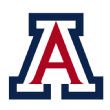ESPN's panel of recruiting experts ranked all 65 Power-5 head coaching jobs by the difficulty of recruiting at each school. Below is a look at the Pac-12 rankings. For the complete 1-65 list, and more on the criteria and tiebreaking procedures for the rankings, click HERE.

1. USC Trojans: 24 out of 25
Favorable geography/local recruiting territory: 5 -- Southern California is an incredibly fertile region for recruits.
Recruiting/football budget: 5 -- USC is a football school, and will spend as much as it needs to in order to recruit.
Facilities to attract recruits: 4 -- New football facility and a storied stadium venue, but not much room on campus to go huge like other programs.
Next-level considerations: 5 -- Strong overall numbers in the NFL, including first-round picks Reggie Bush, Jurrell Casey, Brian Cushing, Ryan Kalil, Matt Kalil, Clay Matthews, Carson Palmer, Tyron Smith, Malcolm Smith, Leonard Williams.
Other intangibles: 5 -- Tradition like no other in the Pac-12. Past and recent history proves that it can get rolling in any era.

2. UCLA Bruins: 21 out of 25
Favorable geography/local recruiting territory: 5 -- See above. No shortage of top recruits in Southern California.
Recruiting/football budget: 4 -- Spent less than Arizona State, Oregon, Utah and Washington among public schools in 2012-2013, but that number is rising. The university restricts how much the football program can do, but UCLA finally gave assistant coaches pay raises in 2014 after having some of the lowest paid assistants in the conference.
Facilities to attract recruits: 4 -- Like the rest of the conference, UCLA will soon have its own new football facility that will be just as impressive as the rest.
Next-level considerations: 4 -- Plenty of talent, but don’t have the big stars that some other schools have. Anthony Barr, Eric Kendricks, Datone Jones, Marcedes Lewis, Rahim Moore among the tpo recent exports.
Other intangibles: 3 -- Basketball school. No stadium on campus. Some academic hurdles. Likely won’t ever be able to put USC in rear view mirror.

3. Oregon Ducks: 20 out of 25
Favorable geography/local recruiting territory: 1 -- Since 2006, less than half a percent of all FBS signees have come from Oregon. It’s a tremendous year for talent in the state and Oregon has offered just four in-state prospects (and gotten commitments from all four). Eugene isn’t for everyone. Rain. Distance.
Recruiting/football budget: 5 -- There’s money for everything.
Facilities to attract recruits: 5 -- There’s money for everything. Every Pac-12 program has/will have new facilities, but they’ll always be compared to Oregon because the Ducks did it first/best.
Next-level considerations: 5 -- NFL impact players everywhere. Kiko Alonso, LeGarrette Blount, Jairus Byrd, Patrick Chung, Josh Huff, Dion Jordan (high draft pick), Kyle Long, Marcus Mariota, Haloti Ngata, Jonathan Stewart, De'Anthony Thomas, Walter Thurmond, Max Unger, T.J. Ward.
Other intangibles: 4 -- There’s money for everything. Uniforms. Other teams slowly catching up though, so Oregon doesn’t have the clear separation they once did. Will the Nike money always be there?

4. Stanford Cardinal: 20 out of 25
Favorable geography/local recruiting territory: 4 -- California is a top-3 talent producing state.
Recruiting/football budget: 4 -- The Cardinal have proven in recent years that they are willing to put more money into football and recruiting. Stanford built homes for all assistant coaches to live on campus. The program and university have a national recruiting footprint.
Facilities to attract recruits: 4 -- Stanford unveiled a new football facility in October 2013.
Next-level considerations: 5 -- Plenty of recent NFL talent including Andrew Luck, Richard Sherman, David DeCastro, Zach Ertz, Coby Fleener, Ty Montgomery, Trent Murphy, David Parry and Andrus Peat.
Other intangibles: 3 -- Though it’s rolling right now on the recruiting front, it isn’t the kind of job where you can step in and it immediately happens. Jim Harbaugh and David Shaw embraced the challenges that come with the academic hurdles (which could be a nightmare for other coaches). The gameday experience for recruits at the stadium will never rival many of the other Pac-12 programs. But it the academic challenge is embraced, it becomes an advantage that no other school can offer. The "3" here is because this exercise assumes there is no coach, and things could go either way depending on who takes over.

5. Cal Golden Bears: 18 out of 25
Favorable geography/local recruiting territory: 4 -- California is a top-3 talent producer, so Cal only misses out on a 5 because it’s north of the biggest concentration of recruits.
Recruiting/football budget: 2 -- Cal spent the least of any Pac-12 programs in the 2012-13 year (the last year data was available), but prior to that, during Jeff Tedford’s run, the Golden Bears proved they could hit the road and recruit anywhere in the country
Facilities to attract recruits: 4 -- Cal has a recently renovated stadium and a new football facility in campus.
Next-level considerations: 5 -- this might be one of the more surprising rankings in the conference to fans from outside the region. There is depth and star talent all over the place, from Aaron Rodgers and Marshawn Lynch, C.J. Anderson, Justin Forsett and Shane Vereen in the backfield, to Keenan Allen, DeSean Jackson, Marvin Jones and Richard Rodgers catching passes, to Alex Mack, Tyson Alualu, Cameron Jordan, Mychal Kendricks and Brandon Mebane in the trenches and/or on defense.
Other intangibles: 3 -- Cal likely won’t let the academic level slip as drastically as it did under Tedford, so that’s a ready-made challenge. Berkeley as a city isn’t made for everybody, which can wildly swing the recruiting process either positively or negatively.

6. Washington Huskies: 18 out of 25
Favorable geography/local recruiting territory: 3 -- Always a few top in-state prospects, and Seattle is a major recruiting tool. The distance the program must travel for recruits is typically greater than for the Oregon schools, but it' usually easier to get prospects in town due to size of city.
Recruiting/football budget: 5 -- Chris Petersen is one of the highest-paid public school coaches in the conference and Washington had the highest-paid public school assistant in the conference in 2013. No Pac-12 public school spent more on recruiting than Washington in 2012-13.
Facilities to attract recruits: 4 -- $280 million renovation finished in August 2013 to stadium/facility.
Next-level considerations: 3 -- There are not a lot of marquee names right now, but that could change quickly thanks to Danny Shelton, Shaq Thompson, Austin Seferian-Jenkins and Marcus Peters.
Other intangibles: 3 -- There’s some tradition with a national championship, but also a winless season far more recently. The gameday atmosphere is one of the best in the conference, but not something that truly tips a recruiting battle on its own.

7. Arizona State Sun Devils: 17 out of 25
Favorable geography/local recruiting territory: 3 -- Arizona State gets a bump above Arizona because more prospects come from the Phoenix area, which usually makes them Sun Devil leans. Proximity to California and Texas is helpful, but ASU still can’t recruit anything close to a full class in-state.
Recruiting/football budget: 4 -- Recruiting budget increased by 160 percent from 2009-2013 -- BoomCopter (the helicopter the school uses to visit recruits) is a luxury not every school has, and only two public programs in Pac-12 spent more on recruiting during 2012-2013 season (last year data was available).
Facilities to attract recruits: 3 -- ASU has plans in motion for new facilities, and the Sun Devils have proven they won’t lag behind for long -- but right now the facilities are not up to the standards of the rest of the conference.
Next-level considerations: 3 -- The list isn’t extensive, but it’s growing and there are some names that will resonate with recruits, such as Vontaze Burfict, Damarious Randall, Terrell Suggs, Will Sutton and Jaelen Strong. This could bump up quickly if Randall and Strong continue to emerge.
Other intangibles: 4 -- Academic considerations make this an attractive job when it comes to recruiting, as most high school and junior college players are on the table (though ASU has had some recent trouble getting everybody in -- Nick Alexander, juco DTs). There is some recent history that shows momentum can be built quickly, but it’s also been proven that the Pac-12 South is a difficult place to gain a permanent foothold. Adidas throws plenty of weight behind Arizona State uniforms and apparel.

8. Utah Utes: 16 out of 25
Favorable geography/local recruiting territory: 2 -- Utah actually produced fewer FBS signees than Colorado from 2006-15. But a shorter trip from California for recruits and junior college programs in the state give the Utes a bump over Colorado.
Recruiting/football budget: 3 -- The Utes stepped up with the move to the Pac-12, as the recruiting budget increased 117 percent from 2009 to 2013. Not at the top of the conference, but not floundering.
Facilities to attract recruits: 4 -- New facilities opened August, 2013 -- $32 million.
Next-level considerations: 4 -- Not exactly synonymous with NFL stars, but there are plenty for Utah coaches to point to: Steve Smith, Matt Asiata, Josh Gordon, Paul Kruger, Star Lotulelei, Koa Misi, Nate Orchard, Eric Rowe, Alex Smith and Eric Weddle among them.
Other intangibles: 3 -- One of the best student sections in the conference. This season's hot start showed it was possible to compete “quickly” in the Pac-12.

9. Arizona Wildcats: 15 out of 25
Favorable geography/local recruiting territory: 2 -- Arizona has some talented players, but it’s difficult to keep them away from Arizona State and even tougher to keep them in the state at all. Proximity to California is a major plus, but there are even more programs to contend with there.
Recruiting/football budget: 4 -- U of A has proven under Rich Rodriguez that the school isn’t afraid to recruit hard in every part of the country and throw some money behind recruiting assistants when it comes to digital production and mailings.
Facilities to attract recruits: 4 --Arizona just unveiled new football facilities in August, 2013. Pac-12 Network money is helping out the entire conference there.
Next-level considerations: 2 -- Rob Gronkowski is a star, but not often associated with Arizona since the Wildcats don’t rely on a tight end much. Nick Foles almost recruits more for Oregon now thanks to Chip Kelly’s success with him last season. The Wildcats have fewer than double-digits in the NFL.
Other intangibles: 3 -- Good gameday experience and campus atmosphere, but not enough history to prove that a coach can come in and dominate in the Pac-12 South.

10. Oregon State Beavers: 14 out of 25
Favorable geography/local recruiting territory: 1 -- See Oregon, but even more remote. Oregon State has just two in-state commitments this year.
Recruiting/football budget: 3 -- Was in the lower third of the conference during the 2012-13 season, but the budget increased by nearly 50 percent from 2009 to 2013. Obviously willing to throw money into digital recruiting, as the Beavers have one of the best staffs in college football when it comes to recruiting mailers.
Facilities to attract recruits: 4 -- OSU will begin a $42 million renovation and expansion project beginning after the 2015 season, completed by the start of 2016 season.
Next-level considerations: 3 -- More players in the NFL than most realize, but probably not enough yet to really tip the scales. Brandon Browner, Brandin Cooks, Steven Nelson, Stephen Paea, Jacquizz Rodgers, Markus Wheaton among the biggest names.
Other intangibles: 3 -- Nothing that truly separates them either way.

11. Colorado Buffaloes: 12 out of 25
Favorable geography/local recruiting territory: 1 -- The state of Colorado produced just 1 percent of FBS signees from 2006-2015, so you can’t load up a class on local prospects. Texas has historically been a recruiting spot for Colorado, but the shift to the Pac-12 makes it more difficult. The Buffs are still working their way into California, but there are a lot of programs to jump in order to make a real impact there.
Recruiting/football budget: 2 -- Only two Pac-12 programs spent less money on recruiting than Colorado in 2012-13, and the Buffs budget dropped 3 percent% from 2009 - 2013.
Facilities to attract recruits: 4 -- An estimated $156 million in facilities upgrades were completed this past March.
Next-level considerations: 2 -- Jimmy Smith and Nate Solder are among the biggest names -- Colorado has just eight total players in the NFL at present.
Other intangibles: 3 -- There’s a national championship, so there’s some proof that it can be done there. No real positives or negatives.

12. Washington State Cougars: 12 out of 25
Favorable geography/local recruiting territory: 1 -- While Washington does produce some prospects, it’s a long drive out to Pullman from virtually any talent-producing region in the state. It’s also not as if Idaho or Montana are loaded with prospects, so there is going to be some distance involved for just about every recruit.
Recruiting/football budget: 3 -- Only California spent less than Washington State on recruiting in 2012-13 (the last year data was available), but that represented a 91 percent increase from 2009 for the Cougars. There’s also money coming in for the coaches, as Leach received a $500,000 raise in 2014 and the assistant coach salary pool received the same increase.
Facilities to attract recruits: 4 -- WSU unveiled a $61 million facility last fall.
Next-level considerations: 2 -- Not a lot to point to right now. Deone Bucannon is probably the biggest name, but there have been a few historically.
Other intangibles: 2 -- Mike Price proved that you can get it done there, and Leach has figured it out to some extent, but the location and challenges posed by Oregon and Washington present difficult hurdles.
